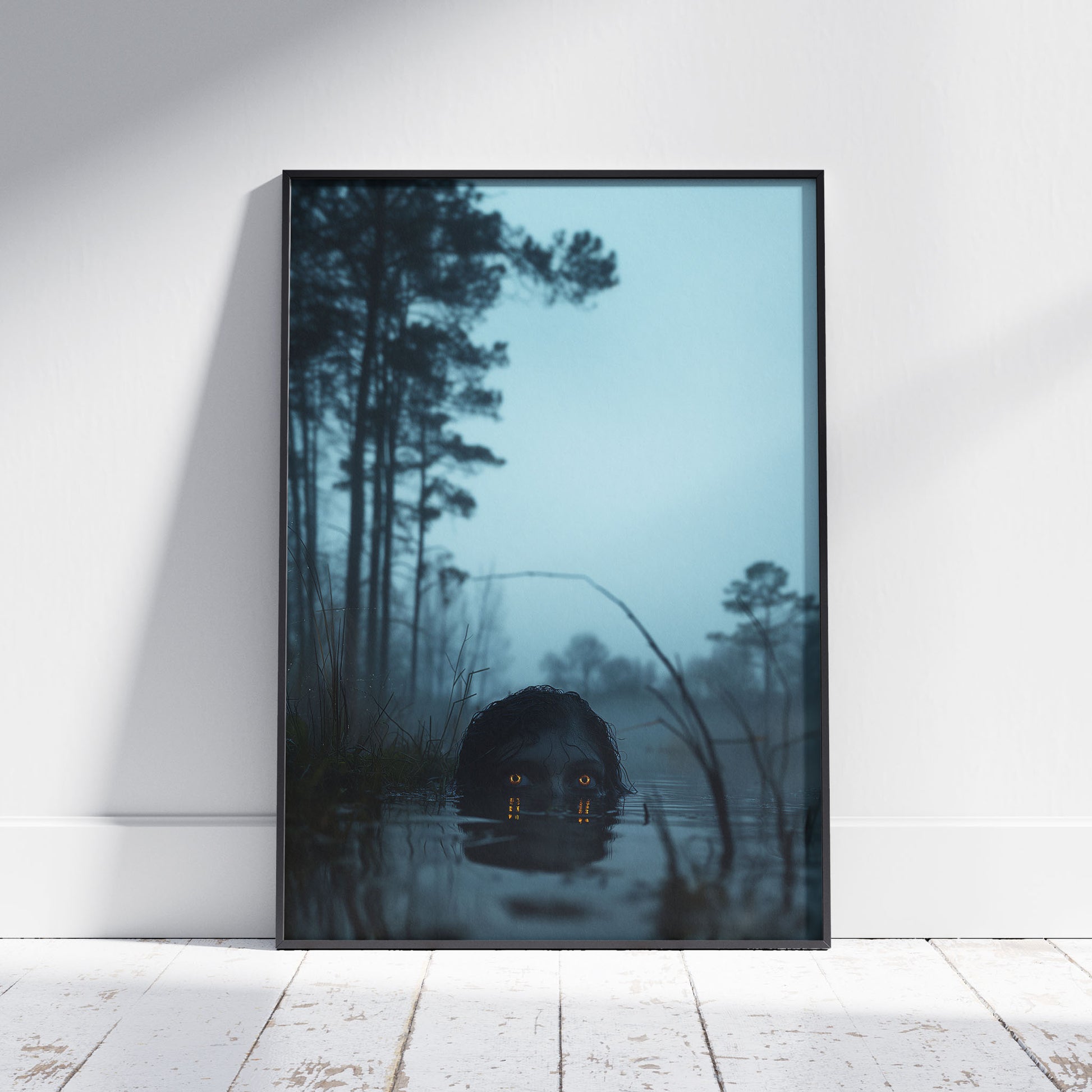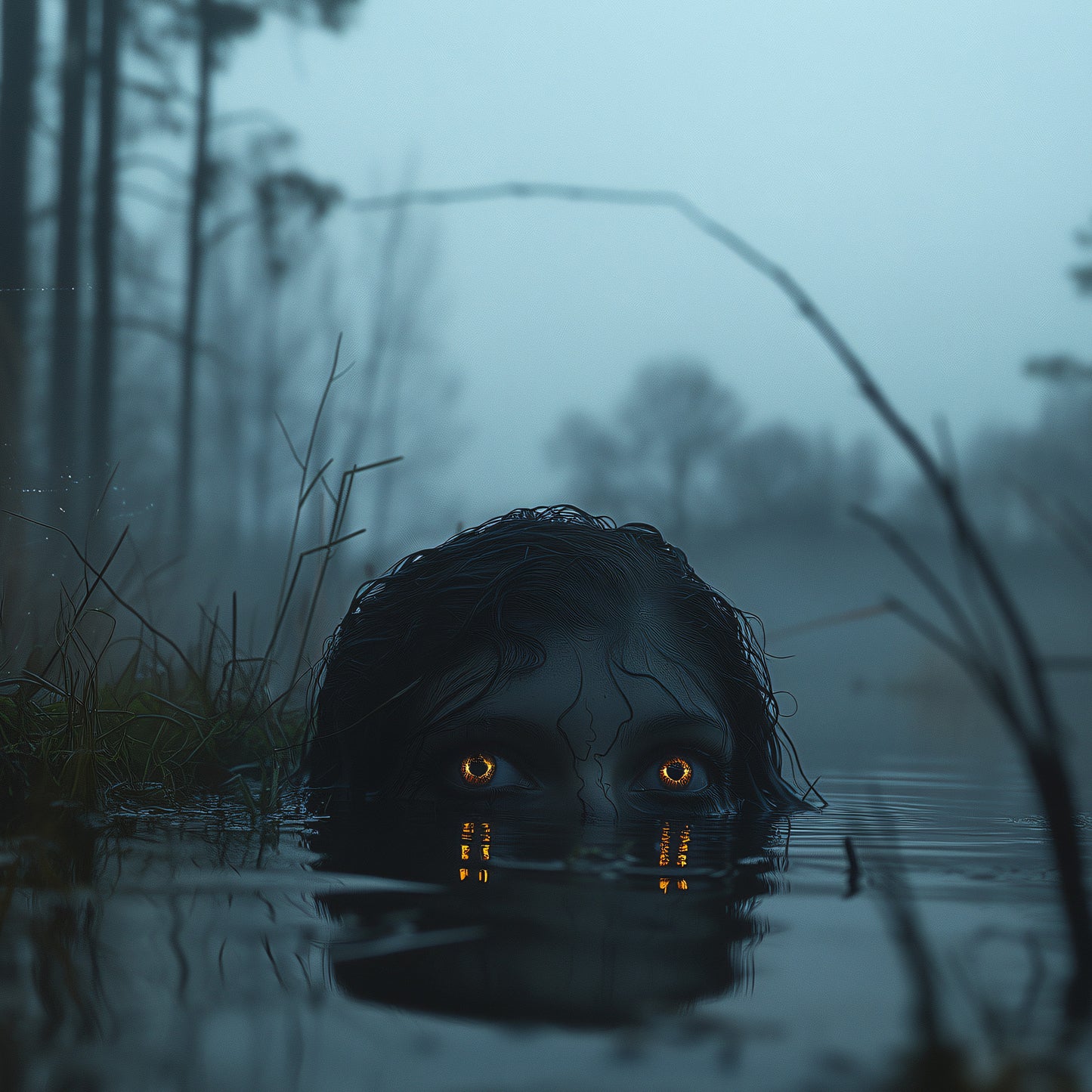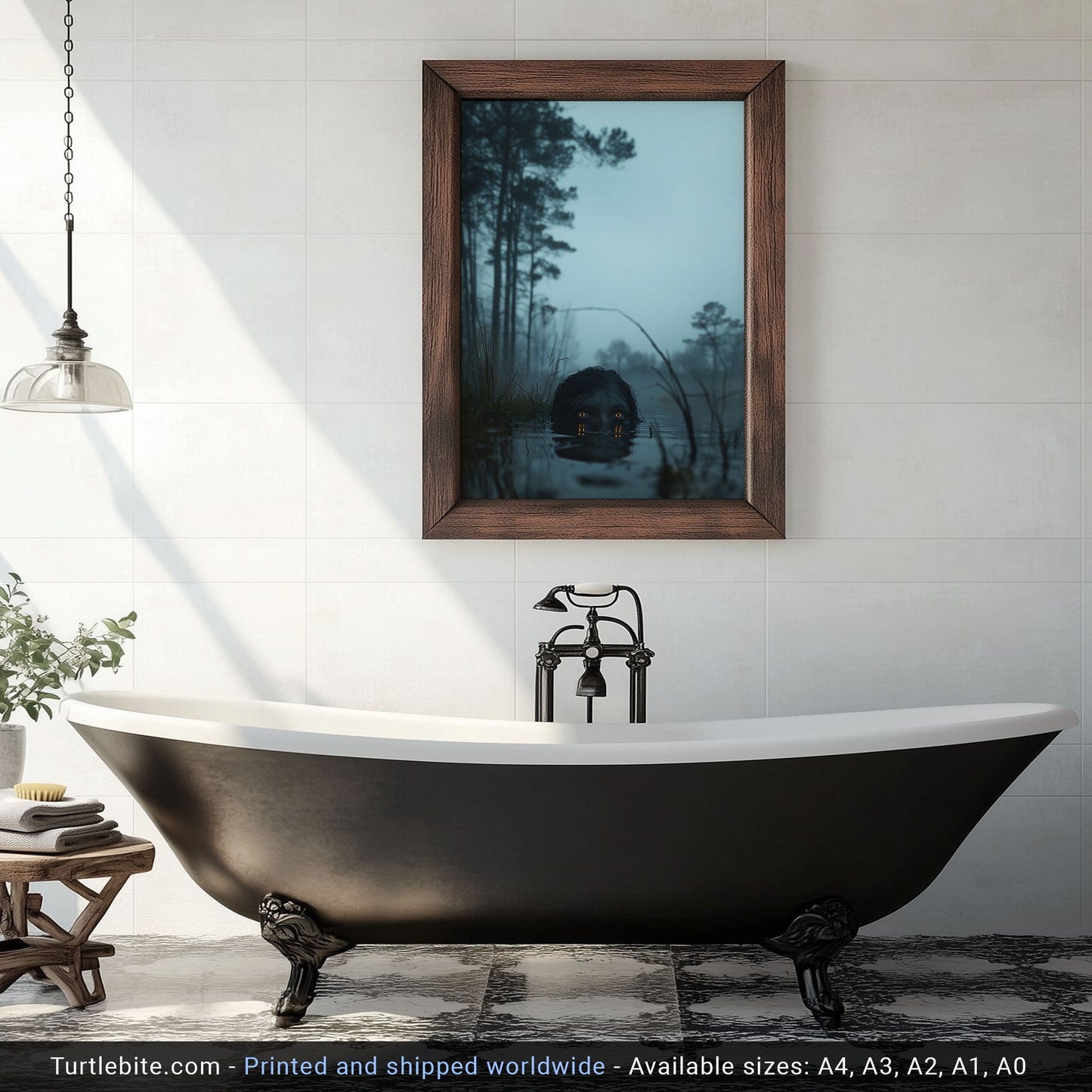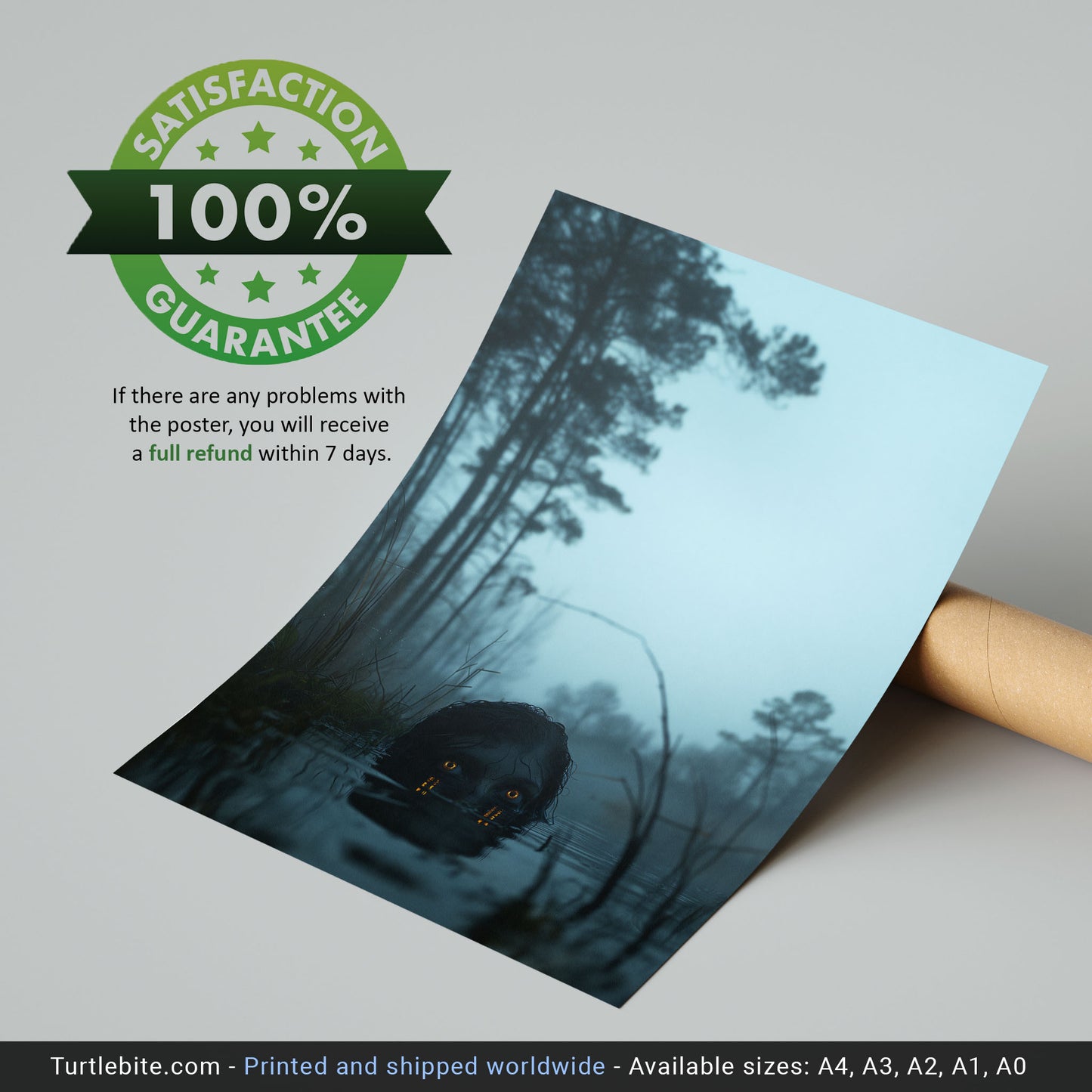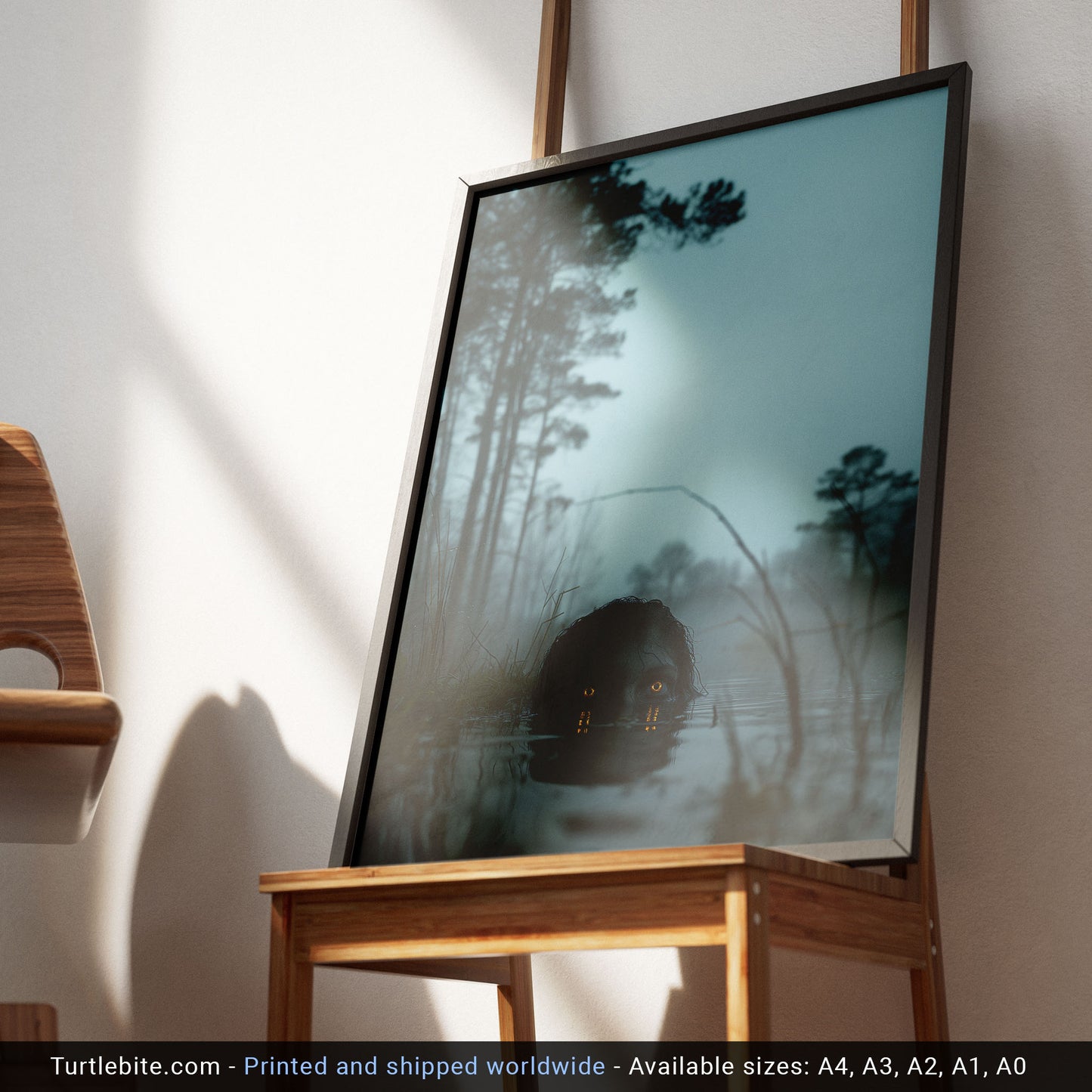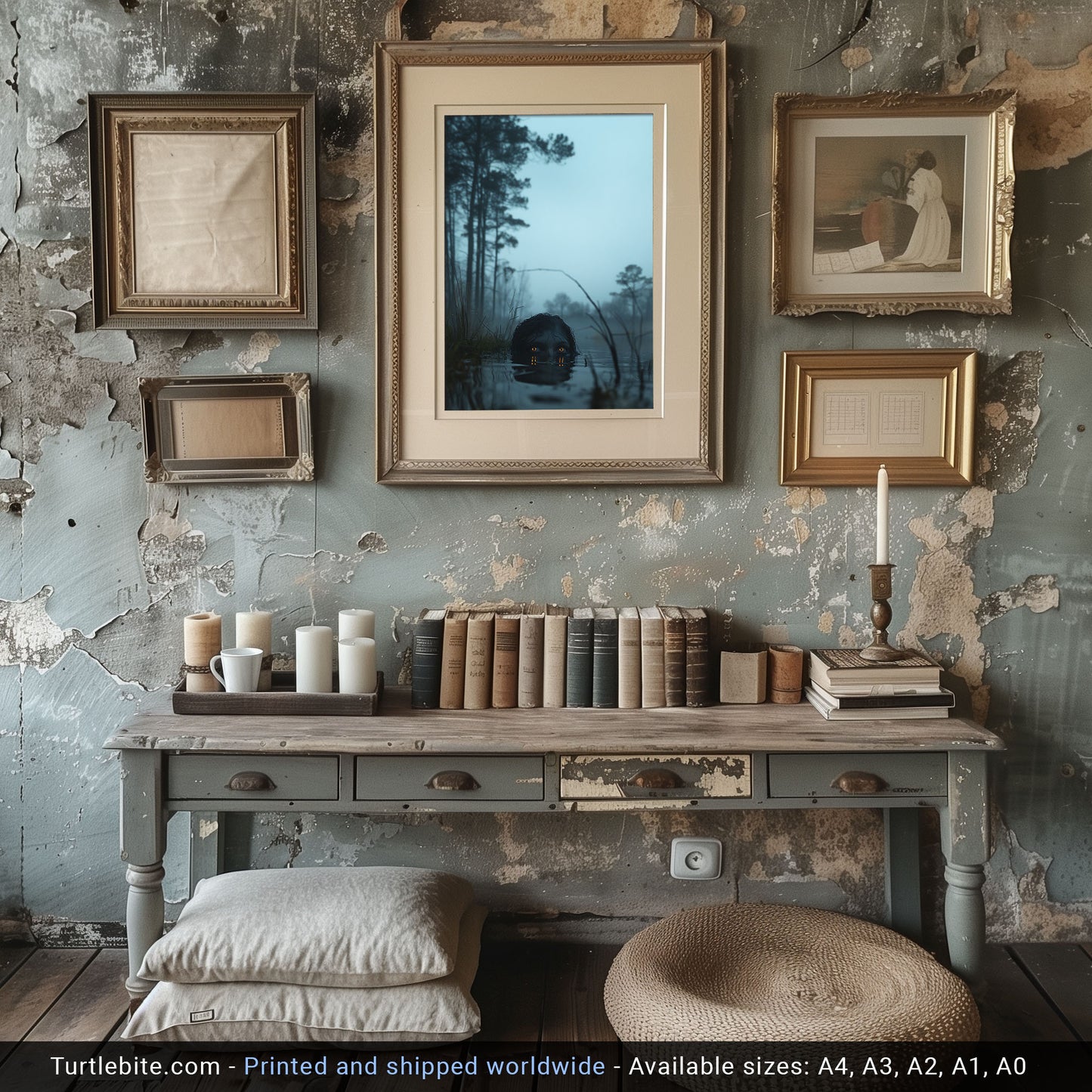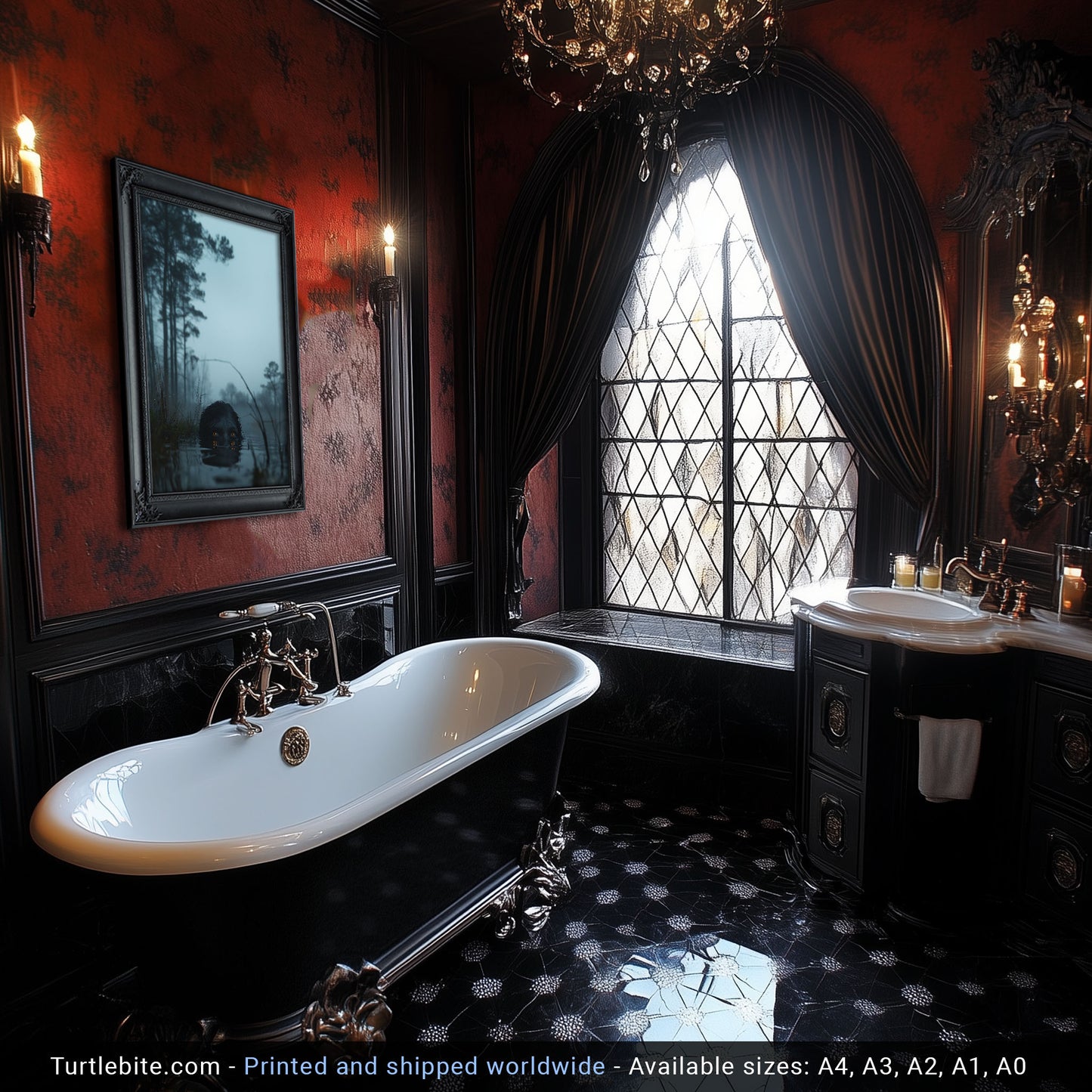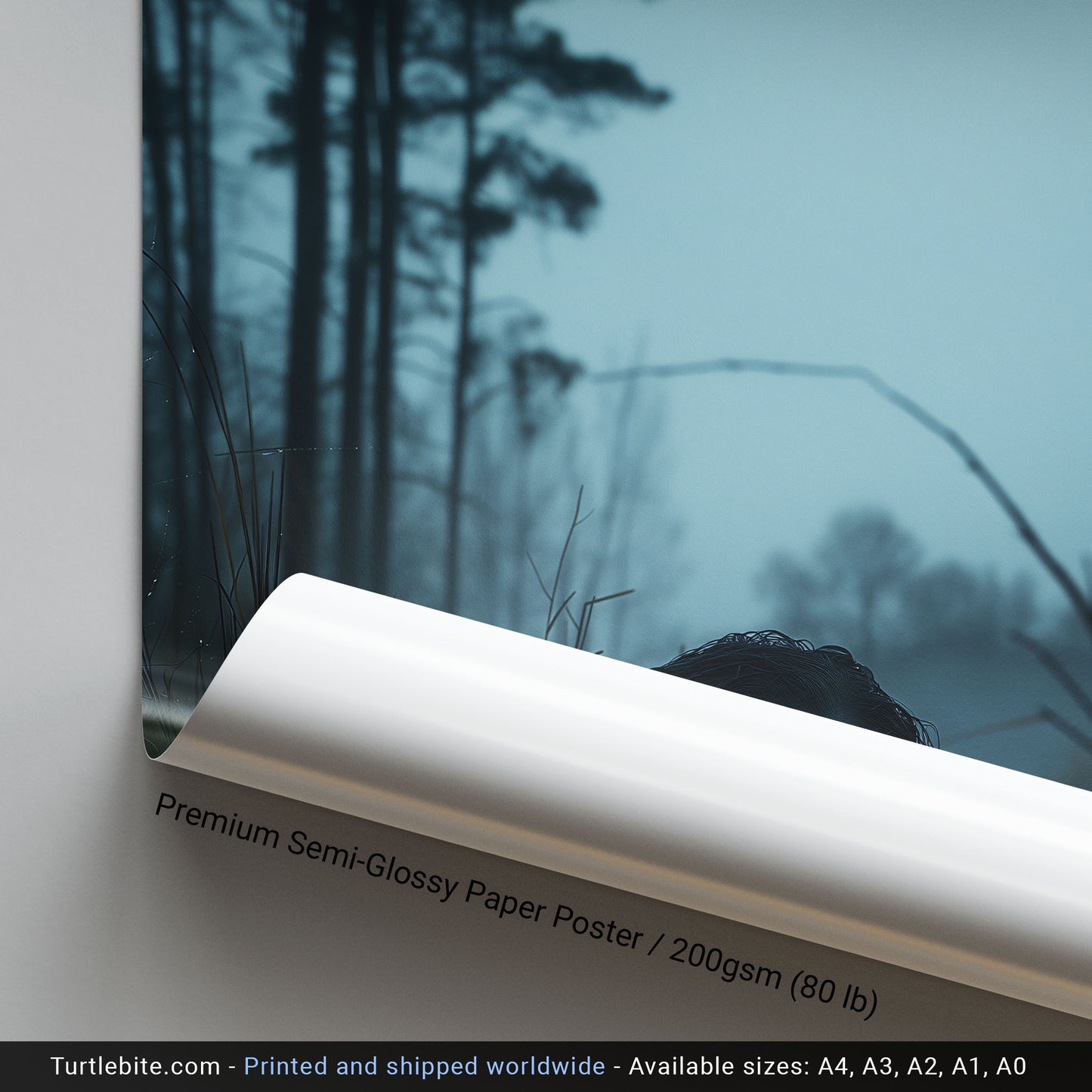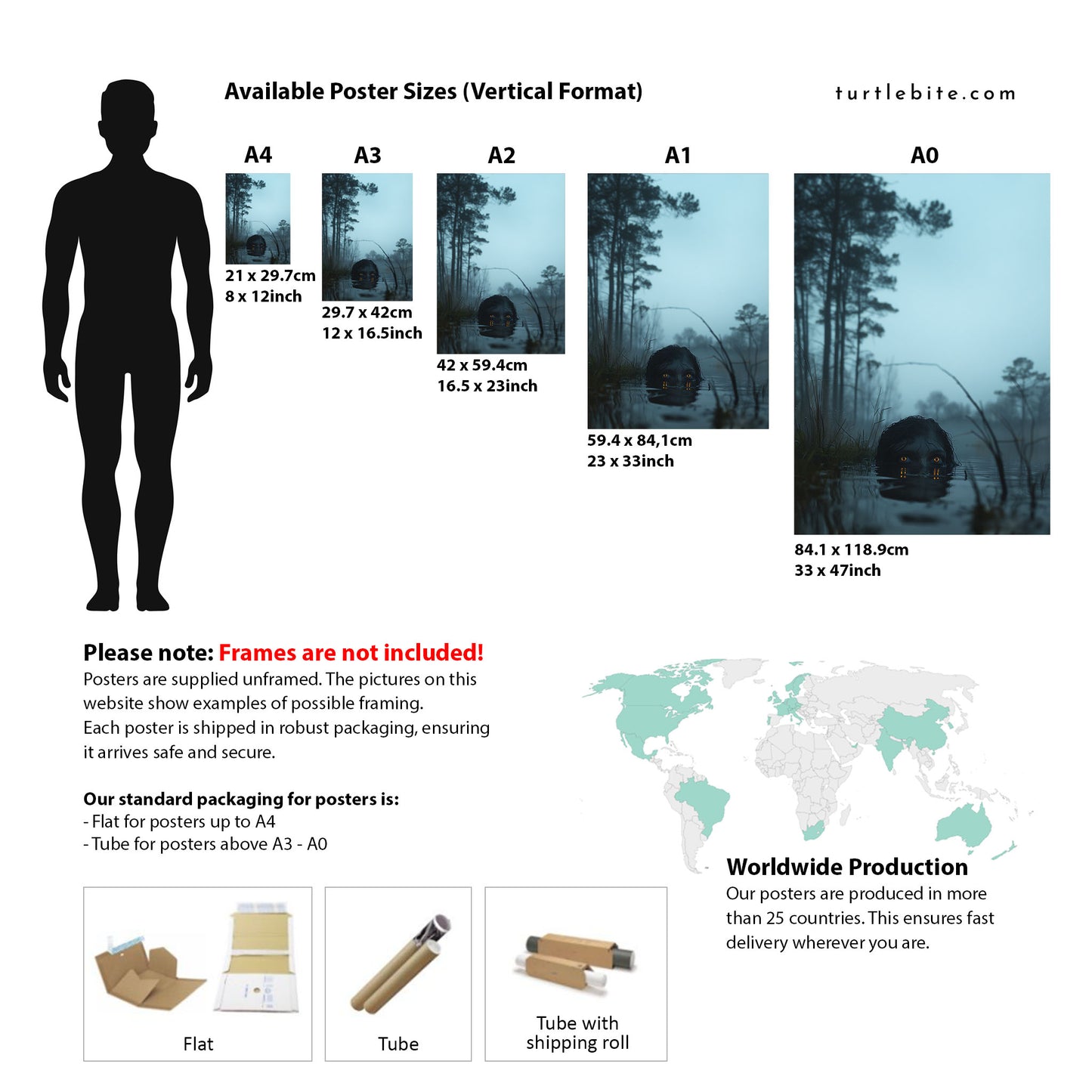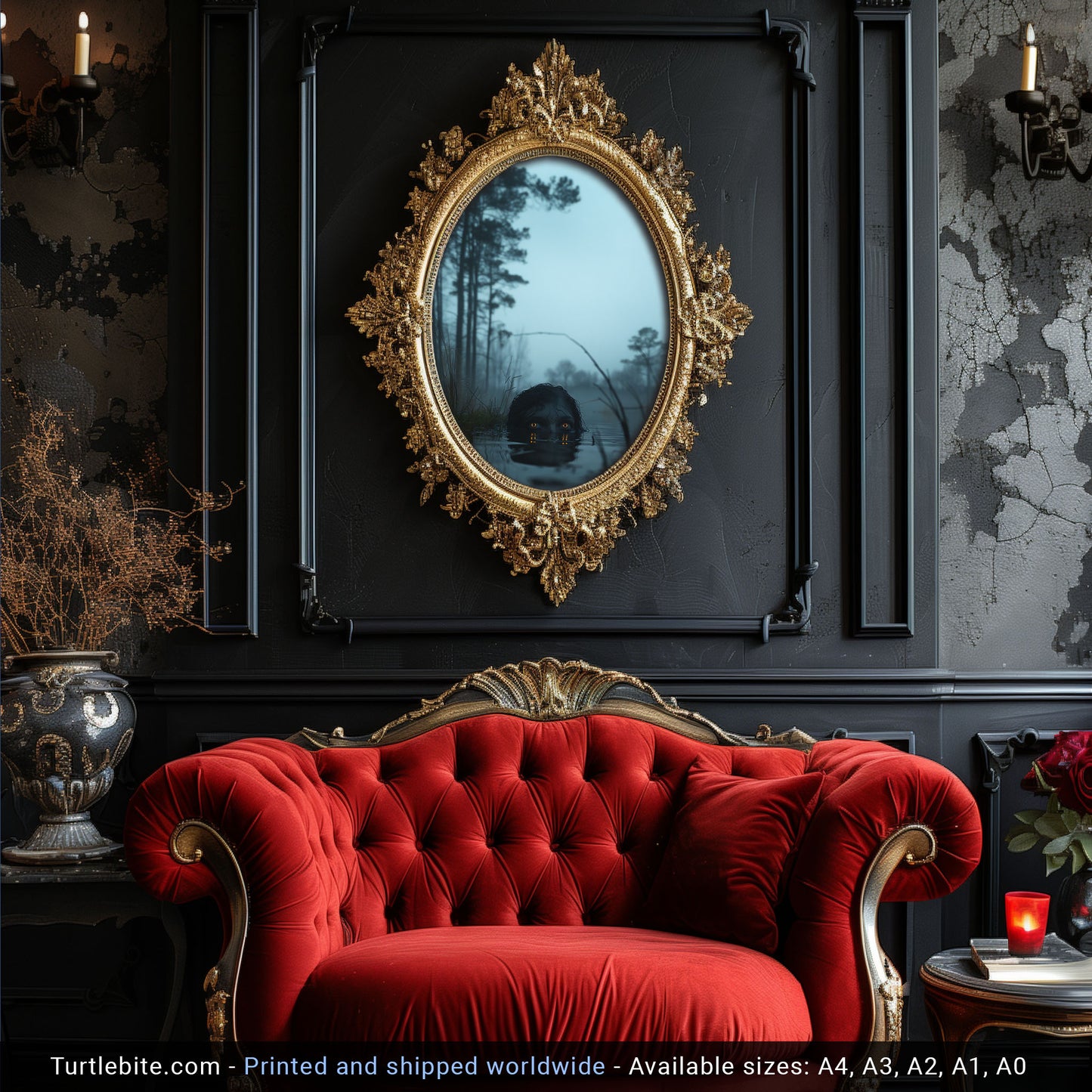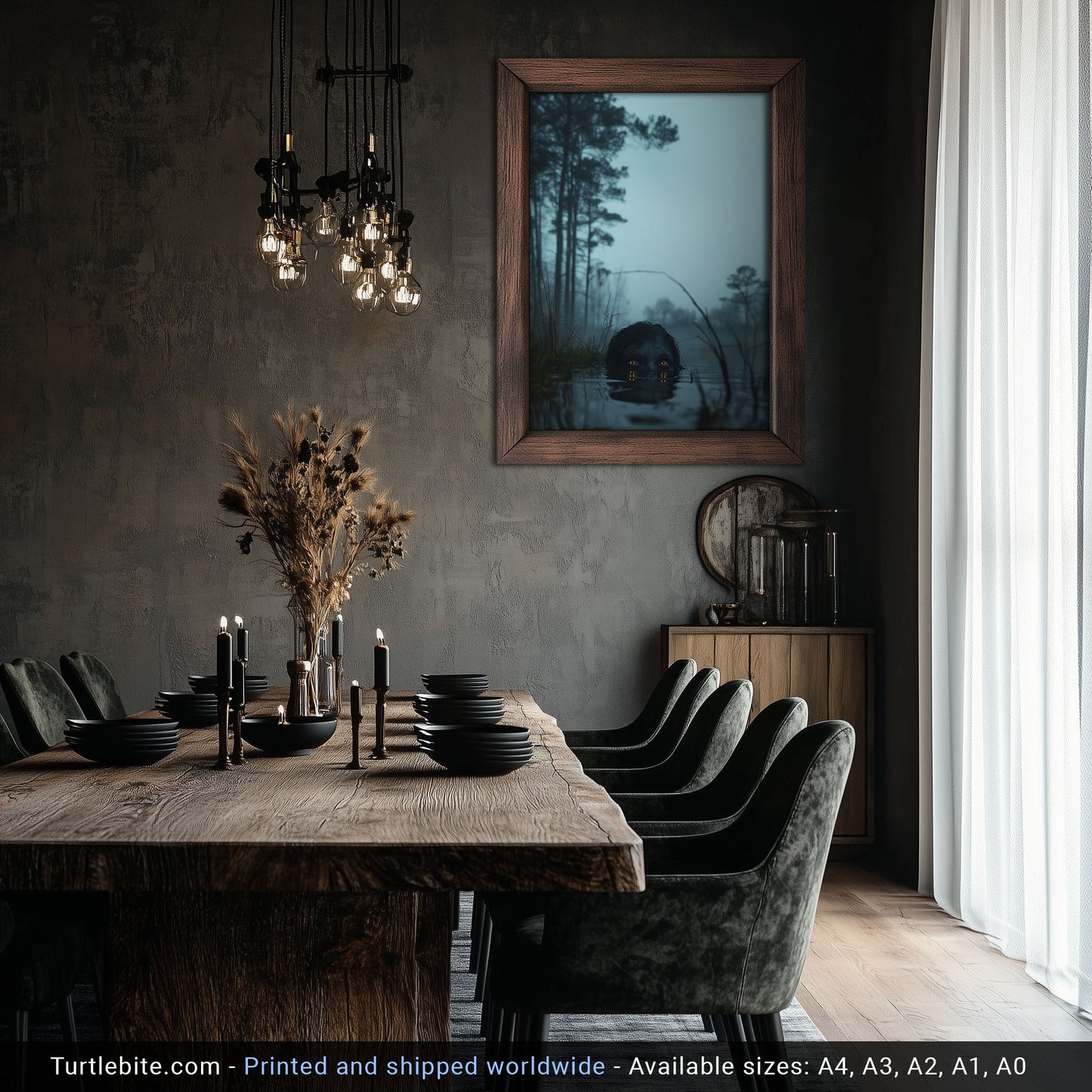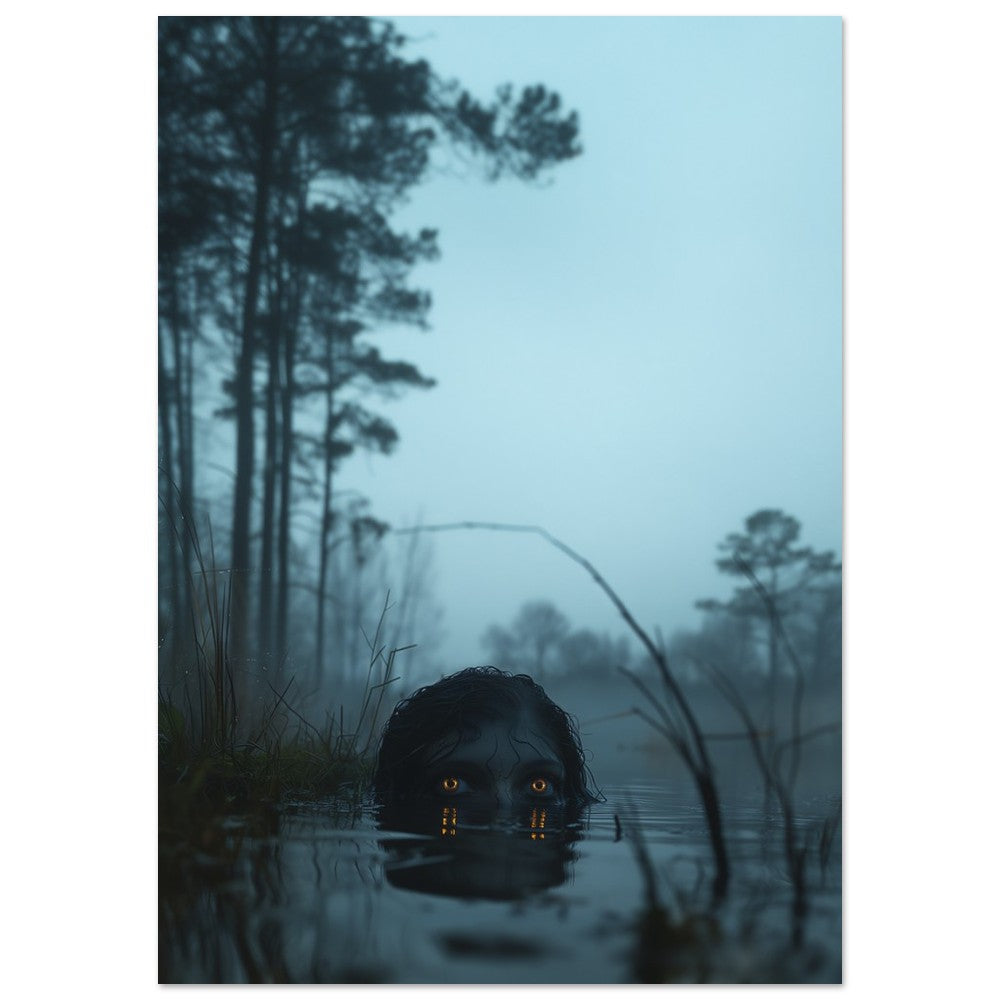
Those Glowing Eyes in the Water? Let's Talk About What's Staring Back.
ChristianShare
Picture this: you’re on a quiet, early morning walk. The air is cool and thick with a rolling fog that muffles all sound. You find yourself at the edge of a still, dark body of water, surrounded by skeletal trees. It's peaceful, almost beautiful. And then you see it. Just at the surface, a pair of luminous, amber eyes breaks the water, staring right into your soul.
What’s your next move? I’m guessing it’s not stripping down for a refreshing dip. If you’re anything like me, your brain is flashing through every horror movie you've ever seen, and your feet are already planning a record-breaking sprint in the opposite direction. That image, or something very much like it, taps into a fear that’s about as old as humanity itself: the terror of what lurks in the murky depths.
The Primal Fear of the Murky Depths
Seriously, what is it about dark water that gives us all the heebie-jeebies? You could be the most rational person on the planet, but dangle your feet off a dock into water you can’t see the bottom of, and a little voice in your head starts whispering, “Something’s gonna grab you.”
This isn't just you being a wimp; it's baked into our DNA. We are land creatures, plain and simple. We can’t breathe in water, we can’t see well in it, and we sure as heck can’t move quickly in it. The water is an alien environment where we are clumsy, vulnerable, and definitely not at the top of the food chain. That fear of the unknown, of what could be swimming just out of sight, is a powerful evolutionary impulse.
And what does humanity do with a powerful, universal fear? We tell stories about it, of course! We give it a name, a face, and a nasty set of habits. Every culture on Earth that has a swamp, a lake, or even a suspiciously deep pond has its own version of a swamp monster or water spirit. The chilling creature in the picture, with its wet, dark hair and piercing glowing eyes, feels like it could be any one of them.
Meet the Locals: A Tour of Infamous Water Monsters
Folklore is basically a global bestiary of things you don’t want to meet in a dark alley – or a dimly lit bog. These folklore creatures weren’t just invented to be spooky; they often served as cautionary tales. Let’s take a little world tour of some of the most famous (and freaky) mythical beasts of the water.
The Jenny Greenteeth and Grindylows of England
Leave it to the English to come up with something so delightfully grim. Jenny Greenteeth is often described as a green-skinned river hag with long hair like pond-weed and razor-sharp teeth. She lurks in stagnant pools, waiting to pull unsuspecting children or the elderly under the surface to devour them. Charming, right?
Then you have her cousin-in-crime, the Grindylow. This little beastie is a pale, long-armed creature that snatches kids who wander too close to the water’s edge. While horrifying, you have to admit it’s a brutally effective way to keep your children away from dangerous bodies of water. A bit dark, but hey, it probably worked better than just saying “be careful!”
The Kappa of Japan
Now, the Kappa is a fascinating case. This Japanese supernatural being is one of the most famous yōkai (supernatural monsters). It's typically depicted as a green, humanoid creature with webbed hands and feet, a turtle-like shell on its back, and a very peculiar feature: a dish-like depression on its head that holds water. This little bowl of water is the source of its power; if it spills, the Kappa becomes helpless.
Kappas are weird. They’re known for drowning people and animals, but they also have a strange obsession with cucumbers (it’s their favorite food, FYI) and a deep respect for politeness. According to legend, if you bow to a Kappa, its code of honor will compel it to bow back, spilling the water from its head and allowing you to escape. So, a monster that can be defeated by good manners and a salad ingredient. Japan is awesome.
The Bunyip of Australia
Moving down under, we have the Bunyip, one of the most mysterious cryptids in folklore. The word “Bunyip” comes from an Aboriginal language and is often translated as “evil spirit.” The problem is, no one can seem to agree on what it looks like. Descriptions vary wildly, from having a dog-like face and a horse's tail to being a sort of furry, aquatic seal.
The one thing most stories agree on is its terrifying, booming call that echoes across the swamps and billabongs at night. This ambiguity is what makes the Bunyip so creepy. It’s a formless terror, a sound without a definitive source. A bit like the creature in our image – all we can really see are those eyes. The rest is up to our terrified imagination.
What's with the Glowing Eyes?
Let’s get back to those mesmerizing peepers. The glowing eyes trope is a classic in horror and fantasy for a reason. It’s an immediate, undeniable sign that you are not looking at something normal. It’s a shortcut to signaling “supernatural,” “predatory,” or “just plain evil.” Ever notice how the villains always get the cool eye effects?
In the real world, this effect is caused by a tapetum lucidum, a reflective layer behind the retina in nocturnal animals like cats, dogs, and, more terrifyingly, alligators. It helps them see in low light, and it's what makes their eyes appear to glow when a light is shined on them. Our horror art inspiration here takes that natural phenomenon and cranks it up to eleven, turning a simple reflection into a sinister, internal fire.
The glowing eyes in the water do a few things brilliantly:
- They create a focal point: In a dark, murky scene, they immediately draw your attention.
- They imply intelligence: This isn't just a big fish. Something is looking at you. It's aware.
- They suggest malice: That fiery orange-yellow color doesn't exactly scream "friendly." It feels predatory and ancient.
It’s a masterstroke of creature design. You don't need to see fangs or claws; those two points of light tell you everything you need to know.
Creating Your Own Nightmare Fuel: A Guide for Artists and Writers
So, what if you want to create your own iconic monster in the water? Whether you’re into dark fantasy art inspiration or writing the next great horror story, this image is basically a masterclass. As an enthusiast of all things creepy, I’ve picked up on a few things that make a monster design truly stick with you.
If you’re looking to make your own horror illustration or character, here’s what you can learn from our swampy friend:
- Start with a Core Fear: The best monsters are embodiments of real anxieties. This one plays on the fear of drowning and the fear of being watched by an unseen predator. What fear do you want to tap into? Claustrophobia? The dark? Spiders? (Please, not spiders.)
- Less is More: This is the golden rule of horror. The reason this image is so effective is that we don’t see the whole creature. Our brains will always invent something far scarier than what you could explicitly show. Let the audience’s imagination do the heavy lifting for you.
- The Uncanny Valley is Your Friend: The face in the water is vaguely human. It has eyes, a nose, and a head of hair. That partial familiarity makes it profoundly unsettling. If it were just a scaly beast, it’d be scary, but the hint of humanity makes it feel wrong.
- Give it a Signature Trait: For this creature, it's the glowing eyes. For Freddy Krueger, it’s the glove. For Pennywise, it’s the balloon. A single, memorable visual element makes your monster instantly recognizable and iconic.
- Build a Legend Around It: A monster is just a monster. A monster with a story? That's a legend. Where does it live? What do the locals whisper about it? Are there rituals to appease it or ways to defeat it (like bowing or offering it a cucumber)? IMO, this backstory is what gives a creature real depth and terror.
So, What Is Staring Back?
In the end, it doesn’t really matter if the creature is a Kappa, a Bunyip, or something entirely new. What matters is that feeling it evokes – that cold knot of dread in your stomach. It’s a reminder that even in our modern, well-lit world, there are still dark places, and our ancient, primal fears are still swimming around in them, waiting for us to get just a little too close to the edge.
These stories and images aren’t just about scaring ourselves. They’re a way of exploring our relationship with the natural world and our own vulnerabilities. They are a testament to the power of the unknown.
So, the next time you see a misty lake or a murky swamp, pay your respects to the folklore creatures that have haunted our imaginations for centuries. And maybe, just maybe, keep a safe distance. You never know what might be looking back from just beneath the surface. ;)

